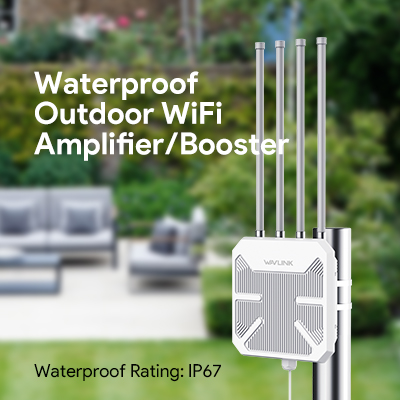Advantages of Mesh Compared to Traditional WLAN
1. What is Mesh?
A mesh network is a wireless mesh network, also known as a multi-hop network.
In a mesh network, any device can act as a node as a router, send and receive signals, and communicate with single or multiple peer nodes directly.
In traditional WLAN, each client connects to an access point (AP) to form a wireless link, and then accesses the network through the wireless link. We call this network structure a single-hop network. In a single-hop network, a fixed AP is essential.
| Users Perspective | Mesh | Traditional WLAN |
|---|---|---|
| Nodes Adding | Multiple products can be paired with Mesh router simultaneously | Products need be add into the network of main router seperately by entering to the repeater step by step |
| Device Management | Unified management: Manage all terminal devices in one place for quick management | Seperate management: Router manages all devices that have connected to it; Repeater manages all devices that have connected to it |
| SSID | Both SSID and network are same in everywhere | SSID could be set same in manual way, but the network is still different |
| Wireless Roaming | It will automatically switch to the nodes with the best signal according to algorithm to ensure users are using the best network speed | Every devices belong to separate network, having no roaming, but some mobile phones may have certain optimizations for switching between different networks |
| Purchase Suggestion | Well-matched, simple matching and reliable performance | Seperately purchase of router and repeater easily leads to problems such as wrong spec, speed mismatch, suboptimal coverage and so on |
| Conclusion from WAVLINK | We recommed you to buy the series of Mesh if you are planning to buy new router | We recommend you to buy a repeater if you are not planning to buy new router |
2. What is Everything Mesh
Everything Mesh is an innovation of WANLINK, which expands Mesh from the fixed networking between the same products to:
(1) Different scenarios such as indoor and outdoor, desktop and wall-plug and ceiling-mounted networking;
(2) Different specifications such as the networking of AX6000 main router and AX3000 sub-router;
(3) Different network sources such as the networking of the 4G main route and the WiFi sub-route.
3. Analyzing For Technical Advantages of Mesh Networking
(1) MESH Pairing
There are mainly two ways: automatic pairing and manual pairing. Automatic pairing refers that the routes in a set are already paired by default, and there is no need for the user to manually add pairing most of the time, but in some situation the customer also needs to manually pair them. While the manual configuration means that the user buys another one(not a set), and the user can also simply manually pair it successfully.
(2) Auto-Configuration
Just set up one main router, you can use the whole system. Through wireless connection, when the first distributed router is connected to the optical modem and set up to access the Internet, other routers can automatically network with the nearest router when powered on. The WiFi name and password are automatically issued by the main router, and other routers automatically change after receiving commands. WiFi related settings.
(3) Backhaul Link Prioritization
In most homes, not every room has a network cable socket. At this time, you can connect to Mesh in a wired way in a room with a network cable, and extend Mesh wirelessly in a place without a network cable, so as to realize wired and wireless sharing.
(4) Network Healing
When there is a node failure in the network, other nodes in the Mesh network will re-check the optimal node and automatically rebuild the optimal network environment for users to use, so that the network can realize automatic reconnection after disconnection.
(5) Role Auto-adaption & Network Optimization
Mesh router can automatically become the main route and sub-route according to whether the external network is connected or not, for example, when the signal becomes poor, according to the signal strength and frequency band interference, the Mesh system will actively navigate the device from the frequency band with poor signal to the frequency band with good signal. In addition, the Mesh system adopts the 802.11k/v protocol, for example, when a device moves between two Mesh routers, the Mesh system will automatically guide the device to connect to a better node router with higher network signal and lower network load based on comprehensive factors such as signal strength, line load and port usage. When the user’s Internet access device is far away from the original signal, it will automatically connect to the router with the closest distance and the strongest signal. The network is completely free of jams, and the device can seamlessly roam between multiple routers.
(6) Maintenance of Client Database
At present, WAVLINK has implemented software management for our existing Mesh products, and can maintain and manage topology and device data.
(7) Wide Range
Expand the scope of the network Mesh Wi-Fi can realize extended connection with multiple routers, which can effectively expand the network coverage of Wi-Fi, and can be used in large-sized villas, office buildings, large shopping malls and other scenarios.
(8) Modern Design
WAVLINK’s Mesh router combines Internet access and decoration functions, which means it not only has a beautiful appearance but also can be placed at home as a decoration.

